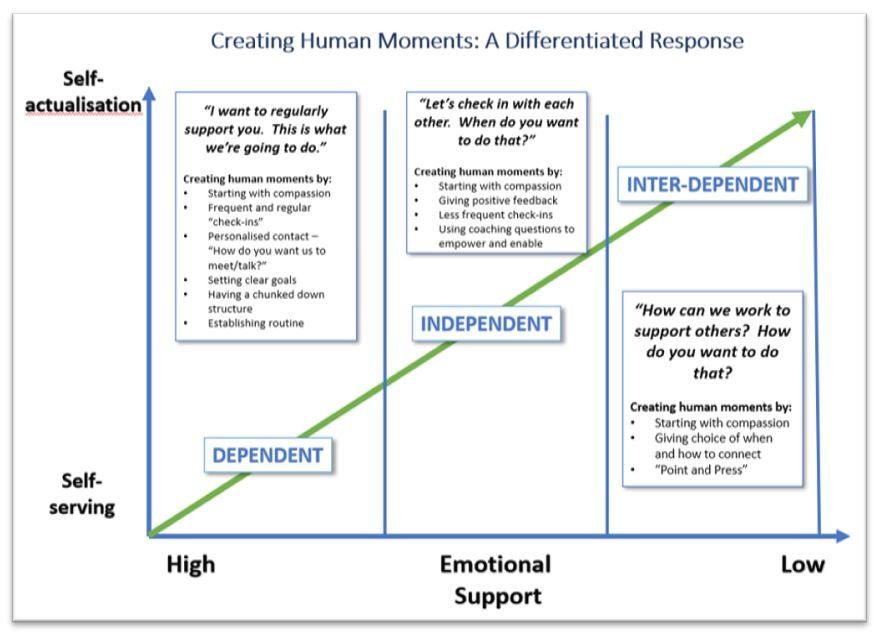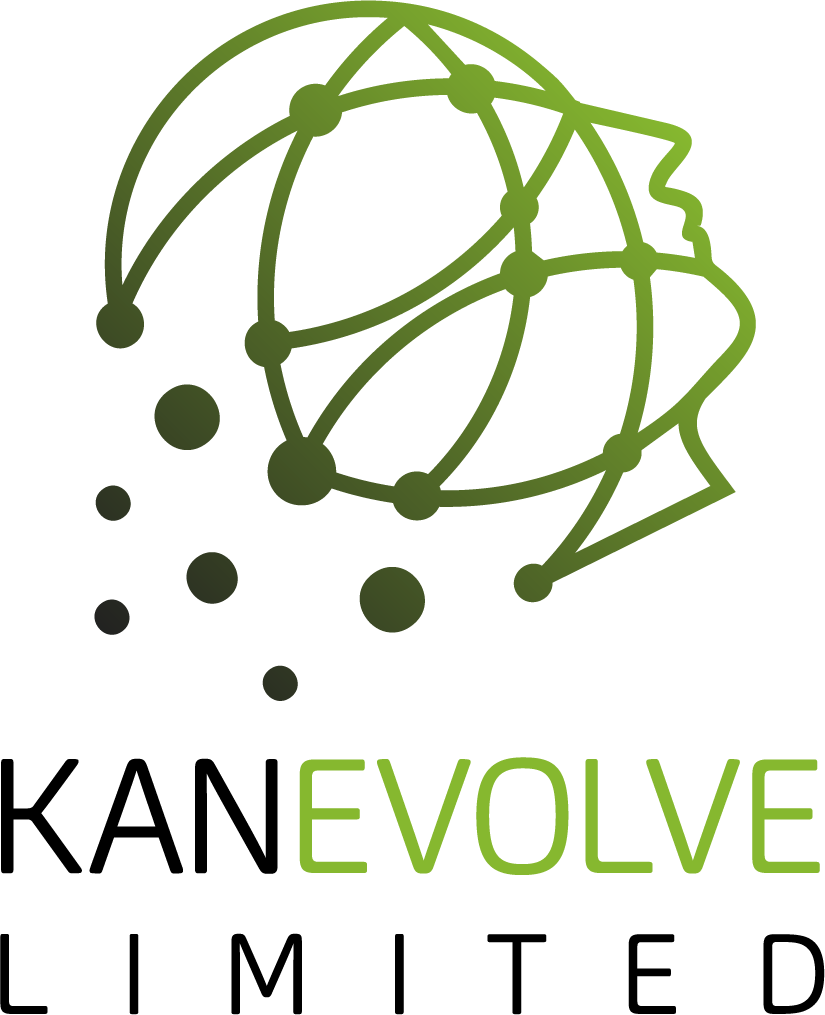Part one: Creating “Human Moments”
The antibody we all need!

In a recent paper the MIT referred to this period as ‘the greatest migration in employment history; from the workplace to the home.’ That’s a bold statement, but it’s probably true! Time will tell us how fixed this migration will be. One thing is for sure, the world we inherit from the crisis will have shifted on its axis and we will need to do some shifting too.
We are executive coaches who are working with a range of clients from different sectors. This is Part One of a series of four blogs that provide a coach’s perspective on the current and future challenges and opportunities that we all face. Each blog will focus on one aspect of leadership during these extraordinary times. They build on what we are sensing from our clients and finish with a series of powerful questions that we know our clients have benefited from.
Whilst coaching executives and leaders, what we are sensing is two distinct phases during this crisis; learning to function and learning to evolve. In a recent TED Connect, Jonathan Sacks described two types of leader; one that gets us through, and one that rebuilds. There has been a time when we had to bury ourselves in the present, crisis manage, get things done, focus in on urgent tasks, and survive. Future oriented leaders are now taking the long view; positioning their discussions around what might be and what could be.
Individuals, teams, and organisations will be at different positions along that functioning/evolving curve; that will depend on a complex interplay of internal and external drivers. But the drive that we are interested in here is the “People Drive”.
The abundant research over decades is clear about the value of human capital. If you are a leader that places human capital at the top of your priorities, and powerful voices suggest the most successful leaders do, then of course it is feeling pretty challenging right now. In 2007, the Harvard Business Review published an article about the “human moment” – the moment when we empathise, reach out and connect with our colleagues, give voice to others, and listen. As coaches that’s one of the things we do; we create positive human moments that give others a safe space to think out loud.
It’s worth stressing at this stage that we are referring to those positive human moments. Leaders often talk about that “drain” in the meeting; that person who sucks the energy out of the room and starts every question or statement with “But”. The power of the “Drains” versus the “Radiators” will depend on the organisation’s culture. That culture, how we feel and what we value, will be driven by the way we behave towards each other.
People are talking about feeling disconnected. It’s difficult to take the temperature, to keep their finger on the pulse of the moment. And what about those spontaneous interactions in corridors, over the coffee machine, in doorways (or behind them), and in car parks? We might see those interactions as a kind of human polyfilla; the glue that connects our emotional intelligence and so makes those positive human moments possible. In all organisations, the myriad of spontaneous human moments happens every day. They happen in those temporal and physical spaces that are just there. But organisations who see these human moments as being critical to creating the right culture, are cleverly re-creating those spaces.
In the remote and virtual workplace, those spaces have altered. At worst, those human moments have gone; at best, they are forced into virtual boxes on a screen.
So, what do we replace them with?
What can we do to build human connection?
The danger is that the new and digital paradigms may direct us towards ourselves rather than towards others. When we perceive danger or threat, we can often focus on the urgent rather than the important, and in so doing we ruin the risk of turning off those human moments. Added to how we respond to threats and challenges, for many people there’s something intrinsically “inward” about the digital space. We are essentially being asked to redesign the way we live and work.
The good news is that re-design can be small. We can create those human moments without risk, with minimum effort, and know that they can have resonating impact long in to the future.
Last year I was asked to project manage and lead a team of people. I started every meeting in the way that I always do; “checking-in” with each other. In our first meeting, I started by asking each person to briefly share how they were feeling and what professional or personal successes they wanted to share with the group. I explained that this could be anything at all. Rule one, talk about something you are pleased with or excited about. Rule two, everyone listens and gives the speaker their undivided positive attention. This was met with silence and a perceptible awkwardness, so I decided to go first. Months later those meetings had a new dynamic; all-bar-none not only shared their positive stories with the team, they spent time preparing their input, eager to share their positive news. The impact it had on the relational health of the team was profound leading to high levels of authenticity, honesty, and trust. The outcomes of the project were set up as best practice across the organisation and its partners.
Good leaders know their people. If you ask them to list those staff who may be most vulnerable right now, then they will be able to tell you. Once you know your staff, and have those honest conversations, it’s a simple matter of knowing how to reach out. Working with her team, one executive decided to discuss their reports against a “Dependent / Interdependent scale”. Once done, a differentiated and personal approach to managing individuals could be agreed and put in place. This has one objective: To make everyone feel valued, cared for, and listened to.
There are those who are frightened of the present challenges and the uncertain future and feel unable to express those fears and anxieties; “We don’t do that here. That wouldn’t be good for me.” What does that tell us about the culture and relational health of their workplace? What does it suggest about the levels of trust? If those positive human moments were ever commonplace in these organisations, it might be that they have now been lost in the virtual spaces that are crammed with task-driven urgency.

Creating Human Moments: A Differentiated Response
“Unprecedented” is an over-used word right now, but it best describes our current world. Change has been forced upon us, whether we are used to change or not. Future thinkers may be surfing ahead of the curve, but others are in that “pit of despair” that accompanies every change process. The positive human moments that we create and commit to will see us through. We would propose that leaders must strategically consider a differentiated approach to those they lead; engaging with colleagues’ emotional needs in a way that responds to their level of dependency.
Virtual leadership: FIVE ways to create human moments
1. Reinvigorate your vision and purpose . So important during change! Make sure everyone can articulate where you are heading and why. These are the headlights in the fog! As our work becomes increasingly remote, the goals need to be ever clearer. How we get there becomes a matter of empowerment and bottom-up processes.
2. Send out a regular message. A brief and regular message will lead by example. Choose your media carefully; voicing your stories can have a more immediate impact. Tell your stories with honesty and authenticity. Expressing your own feelings will tell others that it’s okay to feel anxious, unsure, and frustrated – as long you share these with someone. A good friend and fellow coach described this leadership trait as “Licensing others’ behaviours” – it’s okay to be anxious! Let’s talk about it.
3. Have a differentiated approach. Know your staff and respond accordingly. One of our clients sets up a range of ways to connect based on what colleagues prefer (see our graph above). If a colleague is closing down on video in a way that wasn’t evident in the boardroom, that may be because for many people, the video call is their worst nightmare.
4. Encourage questions. Field questions from staff – any questions! Invite all staff to a weekly live Q&A session. Not only does this create those human moments and a sense of belonging, it’s also a smart way to manage your time, and acts as an emotional safety valve.
5. Coaching behaviours . Work with your leaders to embed a coaching style and approach. If authentic coaching isn’t something that you feel confident about, look at ways of bringing that expertise in.
As we transition in to the “new world”, what will we have learned during these extraordinary times? What will we have learned about ourselves? About those we lead? And, what will we carry forwards into the new paradigm?
As we move in to working practices that are a blend of the old and the new, we will need to be mindful of building those human moments. We think remote working will exponentially grow and so the need for leading with compassion will need to come into an even sharper focus. More importantly, we will need to think about new ways to create those spaces in which positive human moments can flourish.

